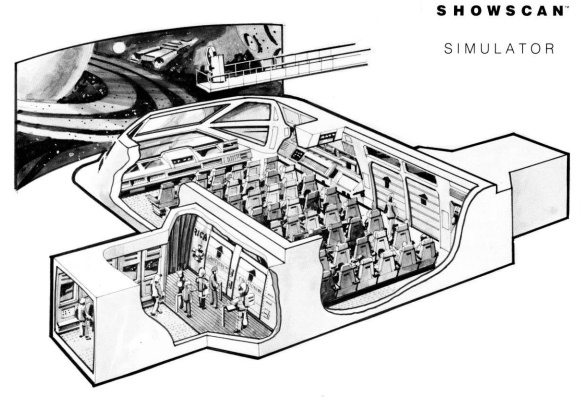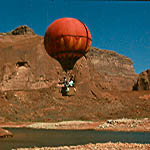Today's story begins on the archived Geocities page of a guy who goes by the nickname Chimmool. His homepage consists of a picture of himself, followed by a comeback declaration to the internet. Chimmool has the tendency to go by many nicknames and often refers to himself in the third person. He calls himself a 'Maestro' looking for his 'Mamacita'. From his writings we can extract that his dating road has been bumpy. There is a page called "The Heartbreak Files" where I assume he further elaborated on his romantic ordeals, but this page has not been archived. Actually none of his other pages have been archived, leaving me forever wondering what the hell Y2LK is supposed to mean (believe me, I Googled it). Setting the Way Back Machine to 1999, we find an earlier version of Chimmool's page. He refers here to another homepage hosted on the server of his school, San Francisco State University.

His SFSU homepage has been archived better and we learn a lot more about Chimmool a.k.a. The Heartbreak Kid a.k.a S.F. Ministry, or one of the many other nicknames he went by online. His real name is Lynn S. Kim and he was born in 1976, which would have made him 23 years old in 1999 when his homepage was archived. Many things on his page indicate that Chimmool was going through a rough patch in his life. From his profile page we learn that he was engaged in some sort of cult called S.F. Ministry for the last four years. I tried to get some more information on S.F. Ministry but all I could find was this page to a religious organization whose goal it is to spread Christian values to law enforcement officials in the San Antonio area...or something like that. On the bottom of his profile page we are invited to "Take a Walk on the Wild Side". On this page Chimmool elaborates in a creepish amount of detail about all the requirements of his future wife. Reading this was uncomfortable, but I think it shines a light on why he was struggling with relationships. Chimmool had a lot of demands when it comes to women as well as, as he admits on his page, a temper. The page also contains a list of things he would have done differently in his life. Here we see "The Magic Balloon" being mentioned for the first time and how he wished he had gotten himself an agent.
Chimmool is a film student and at this point in time his amibition was still to become a film director. On the page "HBK: The Third Decade" we learn that The Magic Balloon was a film in which he had a leading role when he was only 12 years old. He looks back fondly to this time, when he was travelling the world to shoot the film. It seems like starring in this film was the pinnacle of his existence up until that moment. His acting job had made him a popular kid at school, but because his parents decided to move over the summer, he had to settle into a new junior high school where he had to build up his reputation from scratch. It's clear that Chimmool struggled mentally with all these changes and I think this is perfectly understandable for a child of that age. Reading his story I became very interested in this movie called "The Magic Balloon", a film that I had never heard of before.
The IMDB page for "The Magic Balloon" only contains a gritty black and white screenshot and some basic information. The film was released in 1990. At a runtime of 42 minutes it was a short film. The starring cast shows our protagonist Lynn S. Kim along with a Japanese actress called Mari Yoshino and, suprisingly, two big names in Hollywood: Henry Gibson and Frank Langella. The film's director is Ronald Neame, who had a long and productive career in the film industry. Starting out as a cinematographer in the 1930s, he later went on to produce and direct films. He worked with cinema legends such as Alfred Hitchcock and David Lean. His biggest financial success was The Poseidon Adventure (1972). The Magic Balloon's cameraman was Jack Cardiff, another Hollywood heavyweight with a long resume, who's biggest claim to fame is the Academy Award for best cinematography for the 1947 classic Black Narcissus. With such a cast and crew, it is hard to believe that there so little information available about this film. The Magic Balloon is not available on any streaming service and is not for sale anywhere.

After a lot of digging online, I was able to find some more information on The Magic Balloon. The website Screen Online mentions that The Magic Balloon was a promotional film shot for Douglas Trumbull's ShowScan system. This was a new innovative film technology. Shot on 70mm, but with a framerate of 60FPM instead of the 24FPM which was the default in the film industry. The film had a very limited theatrical release as most cinema's did not have the equipment to screen this film. I also found this 8 hour interview with Ronald Neame which is a retrospect on his career. The Magic Balloon is talked about briefly near the end of the fifth part of the interview, but Neame does not seem to regard it highly. He doesn't even call it by name and just refers to it as "The Showscan". It's clear that Neame and others were much more interested in the technology of Showscan than the actual film. Neame speaks positively about Showscan and thinks the format is better than IMAX. Neame explains in the interview that he retired after his 1981 film "First Monday in October", but when he was asked to make The Magic Balloon, he took the job because he wanted to know if he derived pleasure from shooting on such a wide format. He praised the quality of the soundtrack and the clarity of the picture, but he doubted if there was a future for the technology in cinema. He thought the format was more suitable for theme parks.

If want to learn more about Showscan, listen to creator Douglas Trumbull explaining the technology, or read this promotional text.
Looking at a list of films made with Showscan, Ronald Neame turned out to be right. Showscan did not revolutionize the cinema industry. The format was too expensive and required special equipment to be used for screening in regular theaters. Showscan was also swimming against the current, as wide screen formats such as 70mm had peaked around the 60s and 70s. The rise of multiplex cinemas meant that cinema screens were getting smaller instead of bigger. Technologies like IMAX and Showscan tried to prove that there was a future in bigger screens with higher image quality, but largely failed. Showscan was mostly used to make film footage for theme park rides. The high frame rate made it very suitable for recreating thrilling experiences such as POV rollercoaster rides. If you want to learn more about the Showscan format the website in70mm.com is a treasure trove of links, videos and articles about Showscan. On this website I was able to find an interview with The Magic Balloon cinematographer Jack Cardiff for American Cinematographer magazine. The interview was done in march 1990, shortly after production on The Magic Balloon finished. The article makes it clear that Showscan was trying to make the leap from theme parks to cinemas. The film appears to have been made to convince the market that this technology could also be used for dramatic productions, which explains why it is the only Showscan production with a Hollywood director and cast.
Cardiff sheds some more light on the The Magic Balloon in the interview:
"This is an adventure film, with two leads played by children who use magic to follow their whims and travel around the world. Though one scene was shot in a dungeon, Cardiff didn't want it to feel threatening. Illumination came from candles and lanterns, so he set his lights to augment those sources. The biggest unit was 5k and Cardiff used blue and yellow gels to create the atmosphere he wanted. The CP65 camera was on a Chapman crane, tracking freely through the set."
"Big scenes and action are expected in the Showscan format. What's also interesting is the dramatic impact of smaller scenes. In The Magic Balloon, there is a scene shot in a cave - in reality a set at the Culver Studios - where a single beam of sunlight sends a warm yellow shaft cutting through velvet blackness. As the beam of light bounces around the cave, there is just enough ambience to see the faces of the two children in dramatic half-light. Cardiff shot the scene in near total darkness in an eclosed black set, sending one beam of HMI light through a crack in the rocks. Neame had the children poised to catch the light on half of their faces, with the other half visible in the blackness. "The blacks you can get in color now are the best I've ever seen," said Cardiff. "This really put the audience in the cave sharing the children's adventure, and that was the point."
"There was a fair amount of blue screen and front projection work on The Magic Balloon. There is a flying sequence with one of the children who lands on a beach in the middle of a heavy rainstorm with flashing lightning. The rain sequence was shot on a stage against a blue backing at Culver Studios, with artificial rain, wind and smoke for diffusion. This was composited with background plates shot at the Pacific Palisades, in Southern California."
"There is a scene in The Magic Balloon in Venice, Italy, when the two kids are walking down a bright sun-lit street. They go into a restaurant and are seated at an outdoor table. Unfortunately, clouds rolled in and the sky turned dark. Cardiff purposely over-exposed by a stop, tracking from the brilliant sunlight into the unexpected shadows."It was an intuitive thing to do, but it worked beautifully" Cardiff says. "The film has very good exposure latitude."
The article ends by mentioning that the film will open simultaneously at Lotte World, an amusement park in South-Korea which had only recently opened in 1989, and at a Showscan theater in Los Angeles. Now, this is entirely me speculating, but I have been wondering about the choice for two unknown Asian teenagers to be the main cast for this production, and I think the answer may be found in Lotte World. It's likely that Lotte World was somehow involved in the production of this film. Perhaps Lotte wanted to have main characters that Korean audiences could easily identify with when they visited the Showscan theater in Lotte World.
Knowing everything we know now. It changes the way I look at Chimmool's homepage. What a magical experience must it have been for a twelve year old to get a gig as a leading actor in a production made by Hollywood veterans, on a brand new format that was supposed to revolutionize the film industry. How bitter must it have been to see that the film got such a limited release that most people never got to see it. How do you brag about being a movie star, when there is nobody who can watch your movie? I don't know where Chimmool is right now or what his life is like, but from the looks of his IMDB page it's safe to assume that he was not able to realize his dream of making it in the film industry.

As for the other lead in The Magic Balloon. Mari Yoshino (picture above) did not have her big break in the film industry either. She did try to pursue a career as an actress after The Magic Balloon. Her IMDB page contains a few appearances on film productions, but other than that it is hard to find more information on her. After some searching I was able to find this resume which I am confident belongs to the Mari Yoshino who starred in The Magic Balloon. She was born in 1973, making her three years older than Chimmool and was born in Tokyo. Her resume features a few smaller roles in Japanese films and TV dramas, as well as a role in a theater play and a few commercial advertisements. Unlike Chimmool we have no recorded history of Mari Yoshino's thoughts and grievances, but I imagine The Magic Balloon being the highlight of her career as well.
Realistically we could argue that even having one leading role in a film is more than most aspiring actors can show for themselves. It's a privilege to be flown around the world as a teenager and feel like a movie star. On the other hand, it's a crying shame that this movie is nearly impossible to find today. For people like Ronald Neame, Jack Cardiff and Henry Gibson, this was just a quick, post-retirement project to fiddle around with. For Lynn S. Kim and Mari Yoshino it could have been the start of a Hollywood career. It must have meant so much more to them. I also find it unbelievable that the only picture of this film that we can find on the internet is a gritty black and white image. So I went looking on the Internet Archive and I found the official Showscan website, which was online until about 2018. The 2001 version of the page shows The Magic Balloon listed as one of the production made by Showscan. Sadly, the dedicated page of the film was not archived. However, a 2009 version of the page does contain a single color image of the film!

Finally, I was able to find one outlet that lists a copy of The Magic Balloon for rental. It's a video rental shop in Seattle called Scarecrow that specializes in rare media. Their website shows that they have a VHS copy of The Magic Balloon for rent. Since I live in Europe it is impossible for me to go on this endeavour, but perhaps there are people reading this who are based in Seattle and are willing to visit this place. It would be amazing if we could digitalize the tape and be able to watch it online. Of course, the VHS quality is going to be a far cry from the Showscan format, which some people argue is the clearest, grandest filmformat ever to exist. However, beggars can't be choosers and I would love to see our heroes Lynn S. Kim and Mari Yoshino shine, if only once, at the pinnacle of their existence.